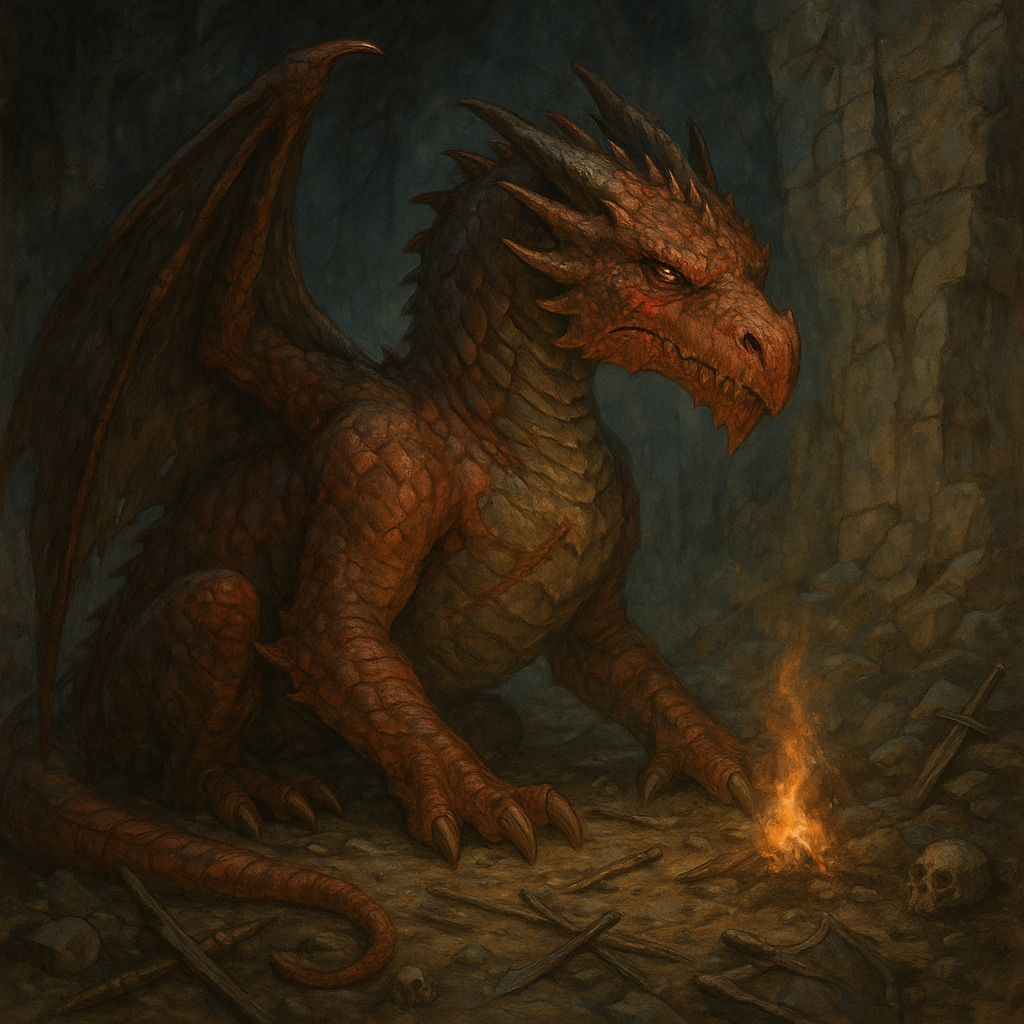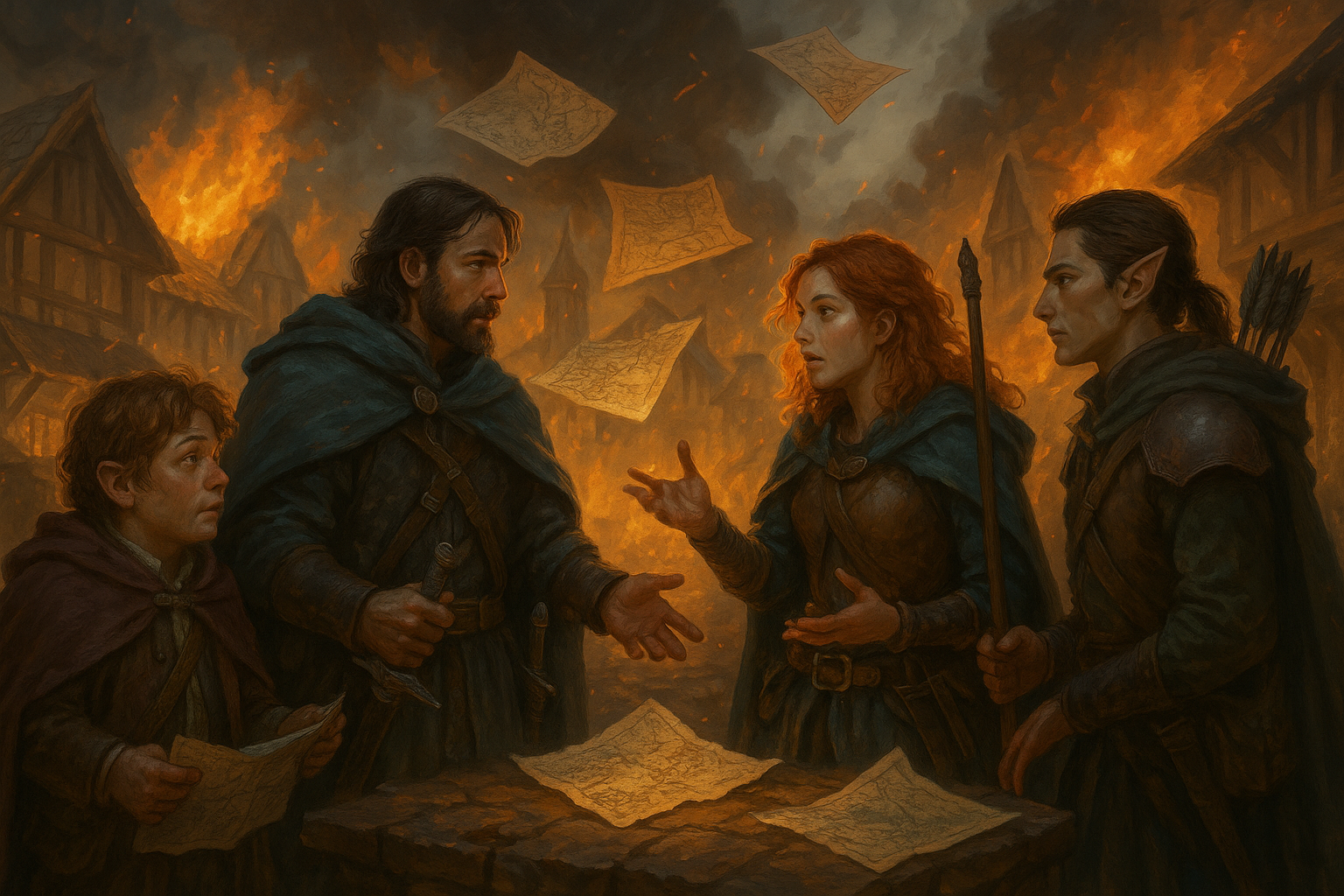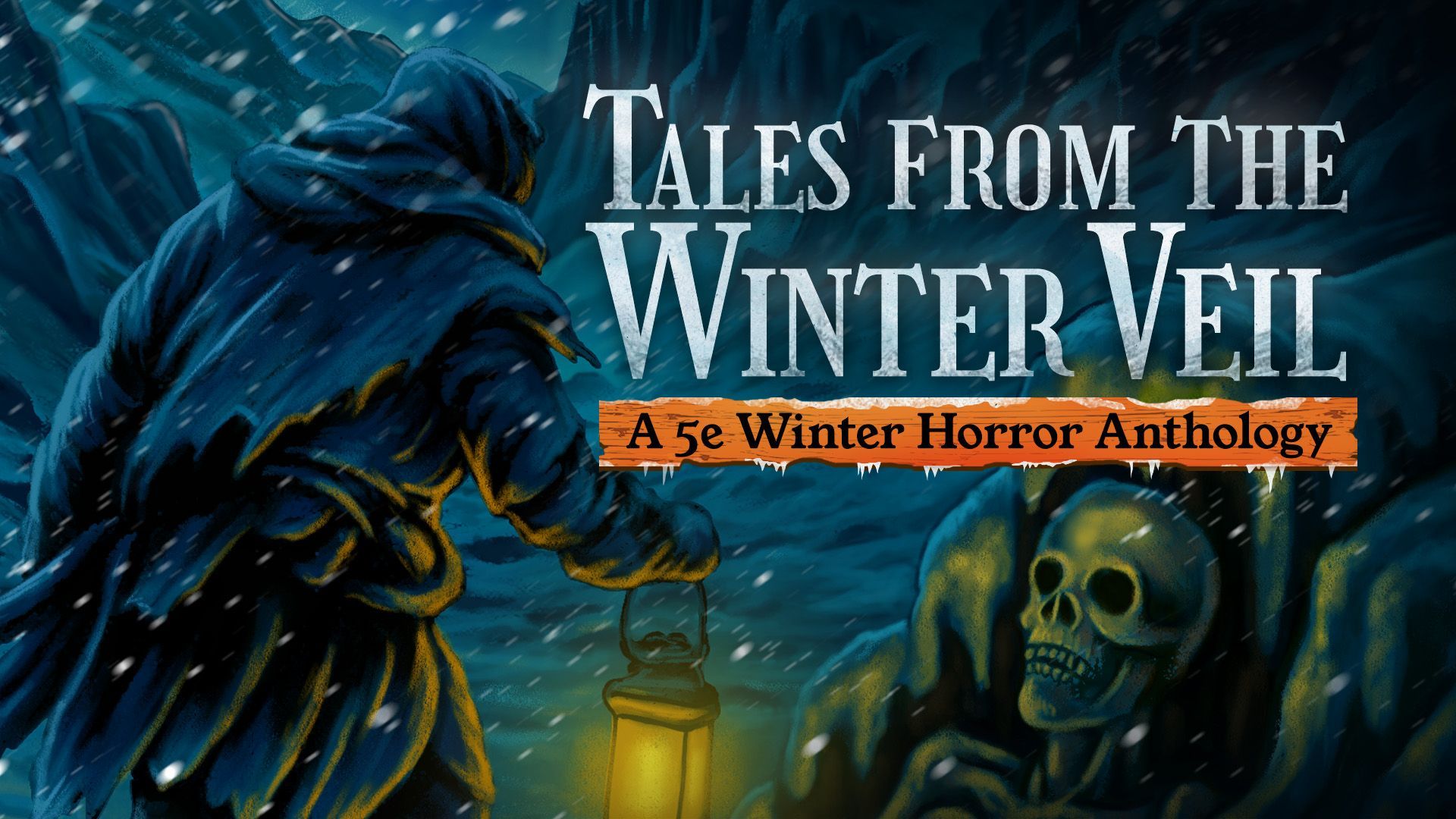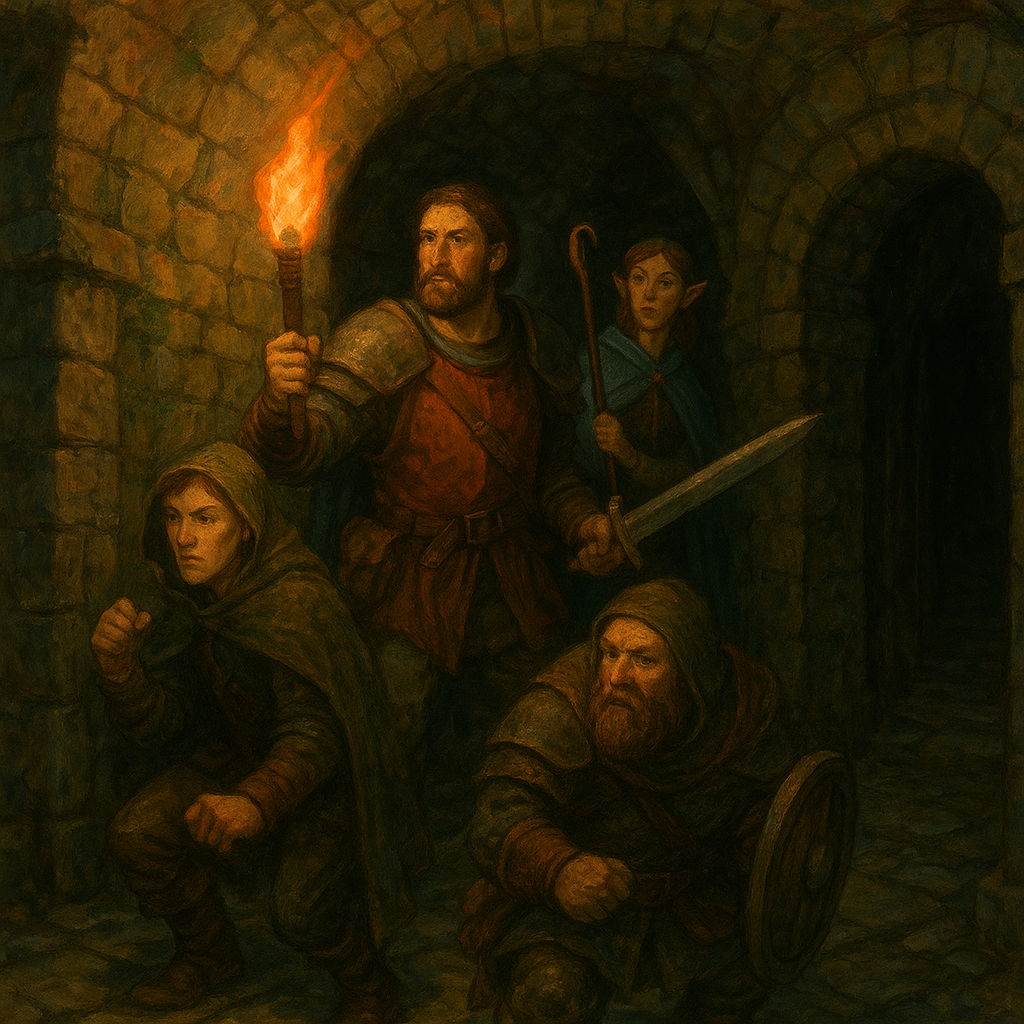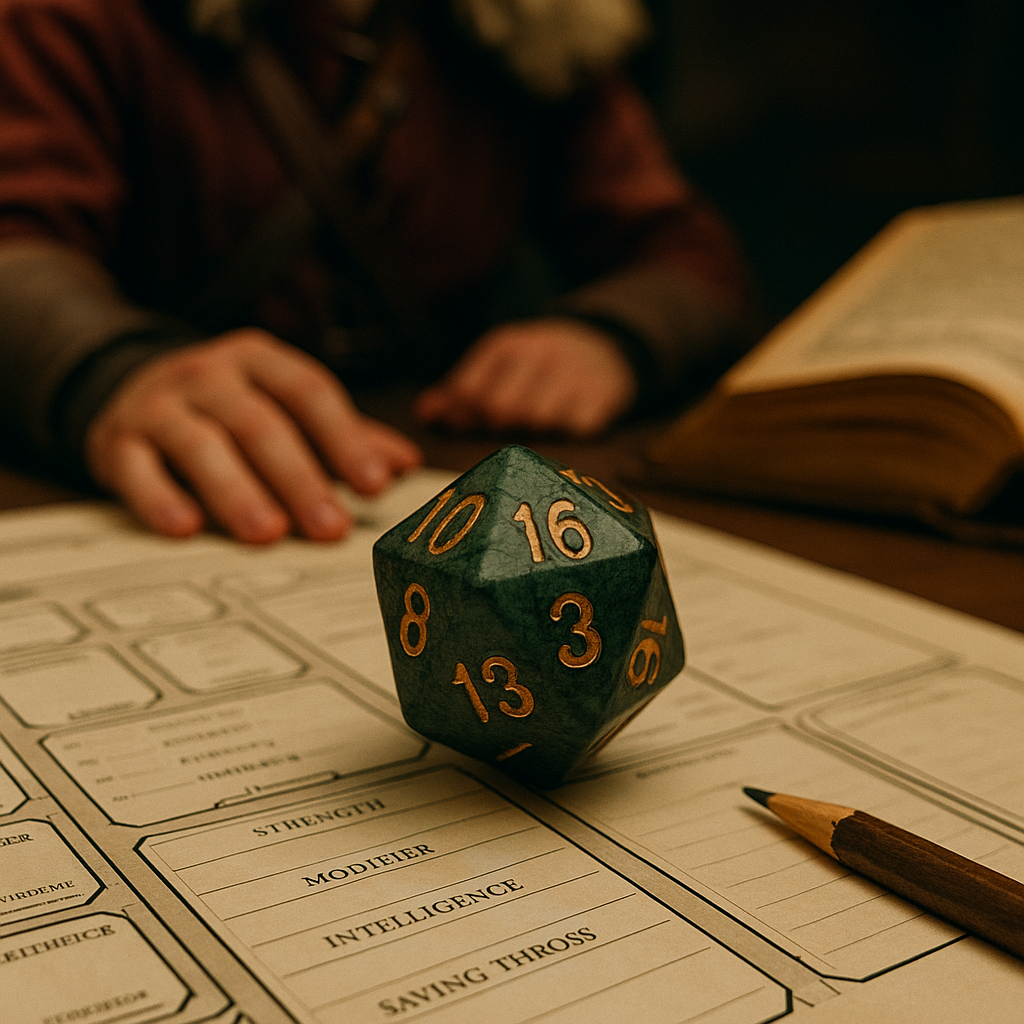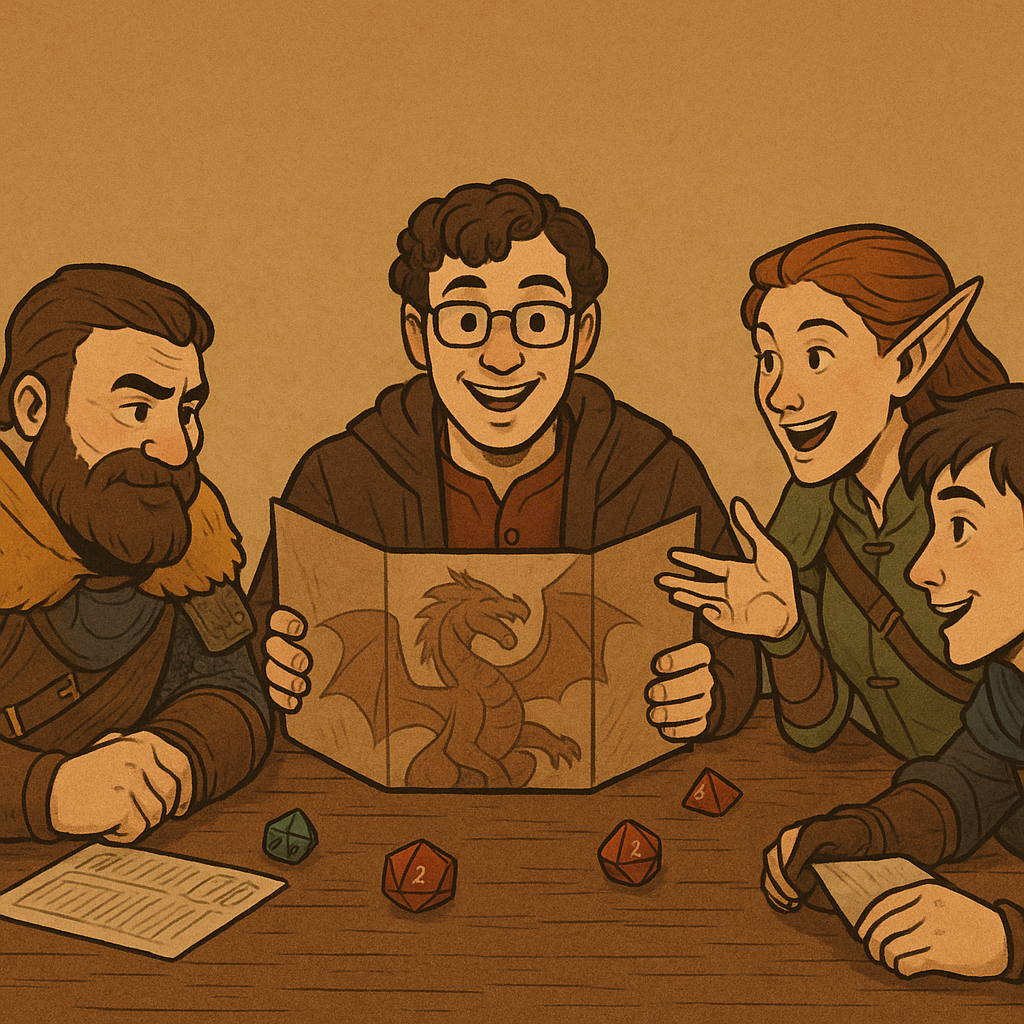Factions in Flux: Running an Ever-Evolving Power Struggle
When Factions Collide

Dear Readers,
Few things shape a campaign’s narrative landscape as powerfully as factions. From guilds and secret societies to religious orders and royal courts, factions offer depth, conflict, and drama in ways that individual villains or isolated quests rarely can. But as rich as they are, factions can often feel static, passive set-dressing rather than vibrant, evolving actors in your world. How do we make sure factions aren’t just background lore, but dynamic players whose shifting alliances and rivalries propel your story forward?
Today, we'll explore precisely that: how to run ever-evolving power struggles among factions, using The Dungeons of Drakkenheim as our example setting. Drakkenheim’s ruined streets, eldritch secrets, and multifaceted political conflicts are perfect ground for factions in flux. By the end, you'll know exactly how to breathe dynamic life into your own factions, ensuring your players feel immersed in a living, reactive world.
Let’s dive into the intrigue...
1. Why Factions Matter: Creating Living Conflicts
Every memorable campaign setting—be it Forgotten Realms, Eberron, or Drakkenheim—benefits from dynamic faction interplay. Factions create depth, layering complexity into the narrative that mere monster encounters cannot replicate. When factions respond realistically to player actions and internal pressures, they bring authenticity, unpredictability, and rich storytelling potential to your table.
Consider this scenario: your party clears out a haunted cathedral. The outcome isn’t just loot or XP—perhaps the Silver Order now controls a strategic stronghold, angering their rivals, the Followers of the Falling Fire. Instantly, players witness consequences rippling through the city. This level of dynamic play deeply immerses players in the world.
2. Overview of Drakkenheim’s Factions
Drakkenheim's factions provide compelling examples of dynamic, competing powers. Let’s briefly meet them:
2.1 The Hooded Lanterns
Survivors of Drakkenheim’s military, loyalists fighting to reclaim their city. Their goal: restore order and crown a rightful monarch. Highly disciplined and honor-driven. Despise the Queens Men
2.2 The Amethyst Academy
Powerful mage guild controlling magical trade, research, and education. Their priority is containing, understanding, and exploiting eldritch resources. Hated by the Followers of the Falling Fire.
2.3 The Followers of the Falling Fire
Believing that delirium is a blessing and not a curse, they believe that embracing it, they will eventually usher in a new age of heroes. Despises the Amethyst Academy and their "perversion" of their use of delirium.
2.4 The Queen’s Men
Mercenaries and opportunists led by the Queen of Thieves. Interested purely in power, wealth, and influence, often serving as brokers or enforcers. Hates the Hooded Lanterns for their interference with their operations.
2.5 The Silver Order
Zealous religious crusaders believing Drakkenheim is cursed. They aim to cleanse the city through divine flame, destroying arcane corruption entirely. Hates the Followers of the Falling Fire, believing them to be heretics.
Each faction’s distinct goals create natural tension, as alliances form and break based on shifting objectives and player interference.
3. Mechanics of Faction Flux
To simulate an evolving power struggle, consider implementing these core mechanics:
3.1 Influence Points & Reputation
Factions gain Influence Points (IP) representing power, prestige, and resources. Players’ actions grant or remove IP, altering factions’ standing and options.
- Minor Quest: +/- 1 IP
- Major Quest: +/- 3 IP
- Critical Event: +/- 5 IP
3.2 Faction Goals & Agendas
Define clear, achievable goals for factions. Goals might involve capturing territories, securing eldritch resources, or disrupting rival plans. Completing goals grants IP and narrative advantages.
3.3 Reactive Dynamics: Alliances and Betrayals
Each faction’s relationships with others should shift based on player actions or major narrative events. Tracking alliance status is essential:
- Allied: Shared resources, collaborative missions.
- Neutral: Limited cooperation, wary trust.
- Hostile: Open conflict, sabotage.
4. Running Faction Turns & Events
Faction Turns structure faction actions periodically.
4.1 Faction Turns: How and When
Run a faction turn between sessions or during downtime:
- Determine goals/actions.
- Roll checks to resolve outcomes.
- Adjust IP and alliance status accordingly.
4.2 Generating Faction Events
Use random tables or narrative logic to generate dynamic events:
- Espionage or sabotage attempts
- Recruitment drives or territory grabs
- Diplomatic negotiations or betrayals
4.3 Resolving Faction Conflict
When factions clash, resolve through opposed rolls (e.g., Influence vs. Influence or opposed skill checks). Outcomes affect IP and future strategies.
5. Involving Players in Faction Struggles
5.1 Joining or Opposing Factions
Players can pledge loyalty, gaining access to quests, safehouses, or equipment—but risking faction rivalries.
5.2 Consequences of Choices
Every choice should reverberate. Supporting one faction could anger another, affecting alliances, resources, or even safety.
6. Narrative Techniques for Running Flux
6.1 Foreshadowing Faction Moves
Hint at faction plans through rumors, informants, or clues. Foreshadowing builds anticipation.
6.2 Creating Meaningful NPC Leaders
Give faction leaders complex motivations and personalities to drive believable choices and memorable interactions.
6.3 Player-Driven Faction Evolution
Allow players’ decisions to significantly shift faction goals or leadership, enhancing their agency.
7. Campaign Examples from Drakkenheim
(Continue through detailed campaign scenarios, complexity management, and pitfalls...)
7.1 Siege of Champion's Gate
Consider the idea of the Silver Order deciding that the "heretics" must finally be eradicated, and then assault their primary entrance to and from the inner city of Drakkenheim.
7.2 The assassination of elias drexel
Consider the implications and repercussions of the Queen of Thieves deciding that Drexel's attempts at stopping her factions' operations needed to stop, and assassinating the head of the Hooded Lanterns' faction to facilitate this.
8. Handling Complexity
Managing multiple dynamic factions can be daunting. Too many moving parts risk overwhelming you and your players. Here’s how you handle complexity effectively:
8.1 Simplifying the System
- Limit Active Factions:
Initially, focus on three or four factions. Gradually introduce others as the campaign progresses. This helps players build familiarity without feeling overloaded. - Use Broad Strokes:
Don’t track every minor detail. Focus on key milestones, significant conflicts, and critical faction interactions. Simplifying the narrative impact makes management easier and clearer. - Recurring Faction Events:
Set specific recurring types of events—like monthly conclaves or quarterly skirmishes—that streamline faction interactions and allow predictable engagement.
8.2 Tracking Tools and Resources
To keep factions manageable, consider these practical methods:
- Faction Cards:
Create index cards with core information about each faction: name, leader, goals, relationships, influence score, and recent key events. Quickly reference or update during play. - Digital Trackers:
Use apps or spreadsheets (such as Google Sheets, Notion, or dedicated campaign management software) to track faction influence, reputation points, and alliances dynamically. - Visual Maps:
Create a simple map showing faction territories, influence zones, or contested areas. This visual aid helps players grasp shifting dynamics instantly. - Regular Recaps:
Start sessions with brief recaps highlighting recent significant faction events. This ensures players remain aware and engaged with ongoing developments.
By simplifying and structuring your management tools, complexity becomes a source of engaging depth rather than confusion.
9. Common Pitfalls and How to Avoid Them
Running dynamic factions can enhance gameplay dramatically, but there are pitfalls. Here’s what to watch out for and how to avoid it:
Pitfall #1: Faction Fatigue
What It Is:
Players become overwhelmed by constant faction involvement or feel stuck in perpetual politics.
How to Avoid It:
- Alternate faction-driven sessions with purely exploration or combat-focused sessions.
- Limit faction quests to key milestones, not every session.
- Allow downtime for personal character development without faction interference.
Pitfall #2: Invisible Faction Actions
What It Is:
Faction decisions and events occur behind the scenes, leaving players confused or feeling excluded.
How to Avoid It:
- Clearly telegraph faction goals and upcoming events through NPC interactions or rumors.
- Offer regular in-game news or notices informing players about faction movements.
- Directly involve players in decision-making moments, rather than leaving significant faction resolutions entirely off-screen.
Pitfall #3: Overpowered Factions
What It Is:
One faction consistently dominates, reducing variety and excitement.
How to Avoid It:
- Use Influence Point caps or diminishing returns to prevent runaway dominance.
- Allow strategic setbacks (like internal betrayals or resource shortages) for overly powerful factions.
- Ensure player actions significantly impact faction balances—empowering them to topple dominant factions if desired.
Pitfall #4: Faction Irrelevance
What It Is:
Factions have minimal impact, leaving players indifferent to their presence.
How to Avoid It:
- Tie significant campaign events directly to faction agendas.
- Provide tangible rewards or consequences for faction alignment.
- Regularly revisit faction goals, ensuring they intersect meaningfully with the main campaign narrative.
Pitfall #5: Static Alliances
What It Is:
Alliances become fixed and predictable, making faction interactions dull.
How to Avoid It:
- Schedule periodic alliance reviews triggered by major events or player decisions.
- Introduce betrayals, spies, or changing faction leadership to destabilize predictability.
- Offer players opportunities to shift alliances through negotiation or significant actions, making their involvement crucial.
By proactively identifying these common pitfalls and implementing solutions, you can maintain a vibrant, evolving faction dynamic that keeps your campaign compelling.
10. Conclusion: Letting Your World Breathe
Dynamic factions don’t just enrich your story—they bring your campaign to life. As power balances shift, players see the consequences of their choices reverberate throughout Drakkenheim, deepening their immersion and investment.
Embrace the flux. Let your factions evolve, clash, and transform, and your players will thank you.
Until next time, Dear Readers...
















